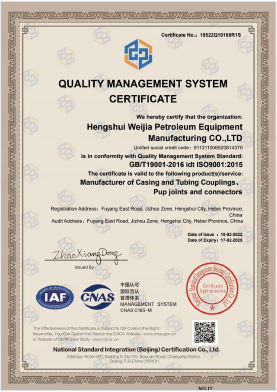- Afrikaans
- Albanian
- Amharic
- Arabic
- Armenian
- Azerbaijani
- Basque
- Belarusian
- Bengali
- Bosnian
- Bulgarian
- Catalan
- Cebuano
- Corsican
- Croatian
- Czech
- Danish
- Dutch
- English
- Esperanto
- Estonian
- Finnish
- French
- Frisian
- Galician
- Georgian
- German
- Greek
- Gujarati
- Haitian Creole
- hausa
- hawaiian
- Hebrew
- Hindi
- Miao
- Hungarian
- Icelandic
- igbo
- Indonesian
- irish
- Italian
- Japanese
- Javanese
- Kannada
- kazakh
- Khmer
- Rwandese
- Korean
- Kurdish
- Kyrgyz
- Lao
- Latin
- Latvian
- Lithuanian
- Luxembourgish
- Macedonian
- Malgashi
- Malay
- Malayalam
- Maltese
- Maori
- Marathi
- Mongolian
- Myanmar
- Nepali
- Norwegian
- Norwegian
- Occitan
- Pashto
- Persian
- Polish
- Portuguese
- Punjabi
- Romanian
- Russian
- Samoan
- Scottish Gaelic
- Serbian
- Sesotho
- Shona
- Sindhi
- Sinhala
- Slovak
- Slovenian
- Somali
- Spanish
- Sundanese
- Swahili
- Swedish
- Tagalog
- Tajik
- Tamil
- Tatar
- Telugu
- Thai
- Turkish
- Turkmen
- Ukrainian
- Urdu
- Uighur
- Uzbek
- Vietnamese
- Welsh
- Bantu
- Yiddish
- Yoruba
- Zulu
Collar Design for Enhanced Tubing Performance and Stability in Various Applications
Understanding Tubing Collars An Essential Component in Oil and Gas Production
In the oil and gas industry, the efficiency and safety of drilling operations are paramount. Among the myriad of components used in drilling and production, tubing collars play a critical role. These are fittings utilized in the installation of tubular goods, primarily in the wellbore, and serve various functions essential to the overall operation.
What Are Tubing Collars?
Tubing collars, often referred to as collars, are mechanical devices designed to connect sections of tubing in a well. They provide structural support and enable the transmission of fluids, gas, and other materials to and from the surface and the reservoir below. Typically, collars are made from robust materials like carbon steel or alloy steel, ensuring they can withstand the harsh environments typical of drilling operations.
Functions of Tubing Collars
The primary function of a tubing collar is to facilitate the connection of tubing sections. However, their role transcends mere connections. They are integral to maintaining the integrity of the well structure, providing
1. Pressure Management Collars help manage the pressure within the wellbore, ensuring that the system can handle the forces exerted during extraction processes.
2. Sealing Properties Many collars are designed with sealing mechanisms that prevent the escape of fluids and gases, thus mitigating the risk of blowouts and leaks which can be catastrophic.
3. Load Distribution They distribute the loads and stresses that occur as the borehole undergoes changes due to production activities. This helps in prolonging the lifespan of the tubing and the overall well.
4. Facilitating Production Enhancement Techniques Certain collars are designed to allow the implementation of production enhancement techniques, such as hydraulic fracturing or acidizing, to optimize well output.
tubing collar

Types of Tubing Collars
There are several types of tubing collars, each designed for specific applications
- Screw Collars These provide a simple, threaded connection that allows for easy assembly and disassembly. They are commonly used in operations that require frequent changes.
- Welded Collars These offer a permanent connection, ensuring a leak-proof joint. They are usually found in high-pressure environments where reliability is crucial.
- Flanged Collars These collars are equipped with flanges that facilitate a bolted connection, providing flexibility in maintenance and replacement.
- Specialty Collars Designed for specific functions, such as pack-off collars that seal off sections of the well during various operations, these collars are essential for enhanced drilling tactics.
Installation and Maintenance
Proper installation of tubing collars is crucial to ensure the safety and efficiency of drilling operations. This involves careful alignment and torque specifications to guarantee a secure fit. Regular inspection and maintenance are equally important, as wear and tear can compromise their effectiveness. Operators should be vigilant in checking for signs of corrosion, fatigue, and pressure leaks to prevent costly downtime.
Conclusion
In conclusion, tubing collars are unsung heroes in the oil and gas industry, providing essential support and functionality to ensure safe and efficient drilling operations. Their ability to connect, seal, and sustain the structure of the wellbore makes them indispensable. With advancements in materials and engineering, the design and capabilities of tubing collars continue to evolve, enhancing their effectiveness in tackling the challenges of modern extraction processes. Understanding their importance and operational dynamics is crucial for engineers and operators to optimize well performance and ensure a safe working environment. As the industry progresses, tubing collars will undoubtedly continue to play a pivotal role in the success of drilling and production activities.
-
Tubing Pup Joints: Essential Components for Oil and Gas OperationsNewsJul.10,2025
-
Pup Joints: Essential Components for Reliable Drilling OperationsNewsJul.10,2025
-
Pipe Couplings: Connecting Your World EfficientlyNewsJul.10,2025
-
Mastering Oilfield Operations with Quality Tubing and CasingNewsJul.10,2025
-
High-Quality Casing Couplings for Every NeedNewsJul.10,2025
-
Boost Your Drilling Efficiency with Premium Crossover Tools & Seating NipplesNewsJul.10,2025







